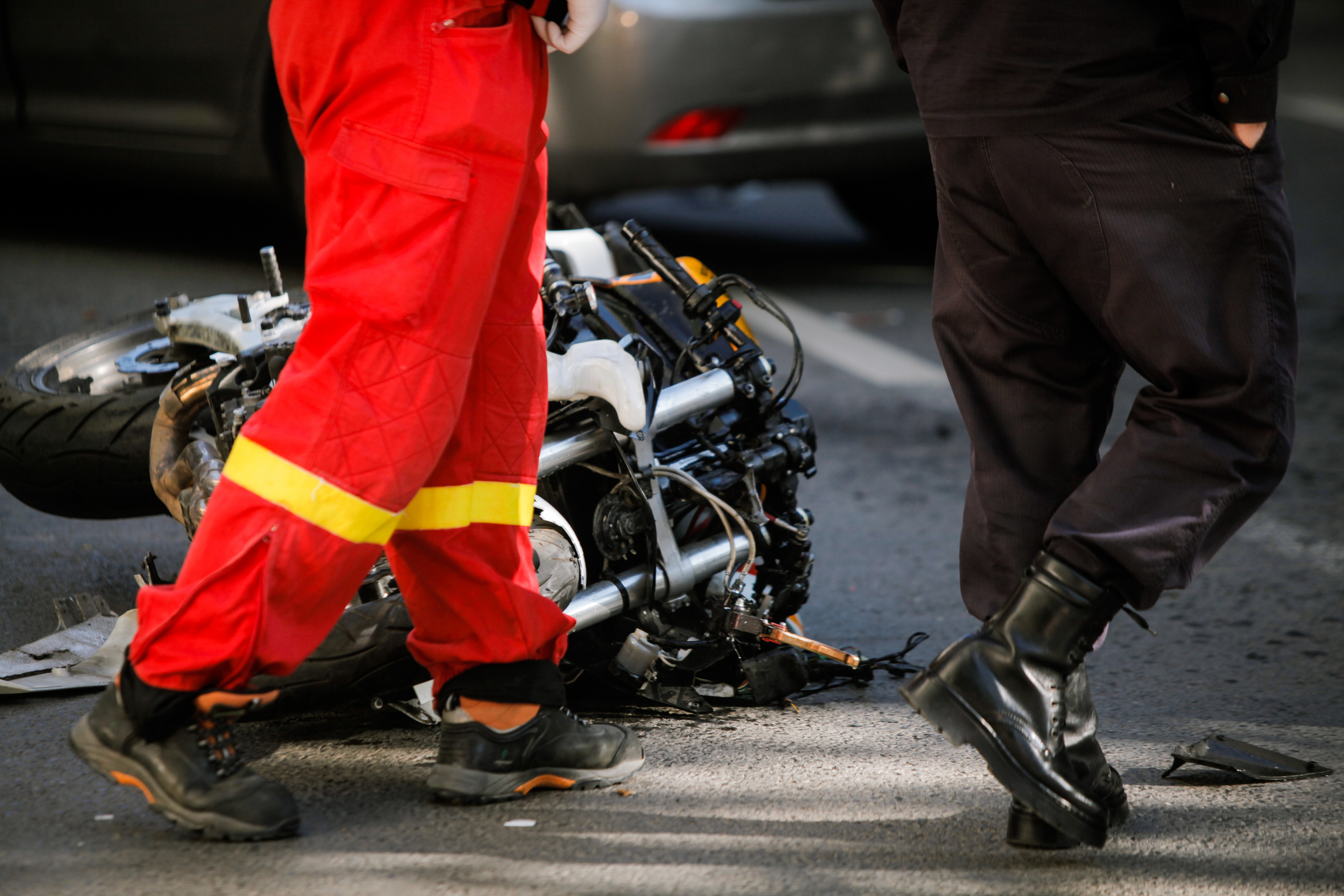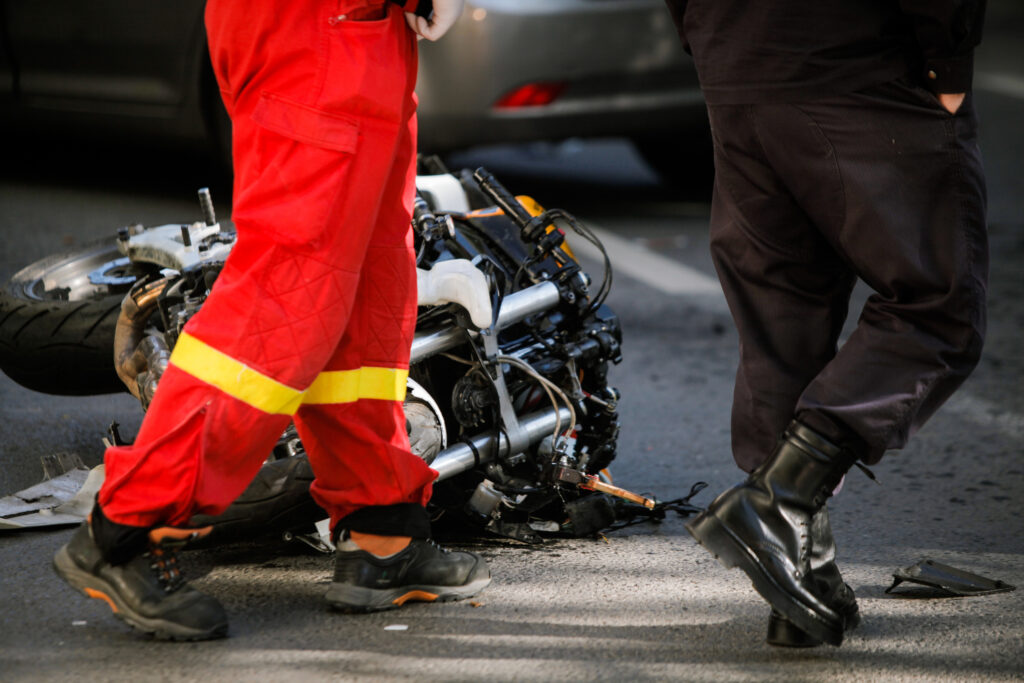- 5 Oct 2025

Motorcyclists traveling across Missouri’s highways face unique risks, particularly along US 50. This highway cuts across the state, including through towns like Knob Noster, where both local and through traffic intersect. Understanding the common causes of motorcycle accidents on US 50 in Missouri is essential for riders who want to remain safe and alert on the road.
Traffic Volume and Congestion on US 50
US 50 is a major east-west corridor in Missouri that accommodates high traffic volumes daily. The combination of local vehicles, long-haul trucks, and high-speed travel increases the likelihood of accidents. In areas like Knob Noster, where vehicles often enter or exit the highway abruptly, motorcyclists face added danger from merging vehicles or sudden braking.
Inconsistent traffic flow and congestion during peak hours can catch riders off guard, especially when drivers in larger vehicles fail to check blind spots before switching lanes. Motorcycle accidents often occur when a car or truck makes an unsafe lane change without seeing the motorcycle, resulting in a side-swipe or forcing the motorcyclist off the road.
Road Conditions and Maintenance Failures
Road surface quality plays a critical role in motorcycle safety. Uneven pavement, potholes, and loose gravel pose significant hazards to motorcycles, which are more susceptible to balance loss than cars. On US 50 in Missouri, certain stretches may experience wear and tear due to weather and heavy traffic.
These conditions become particularly dangerous during rain or early morning hours when moisture or frost may reduce tire traction. Without warning, a rider may lose control if they hit a patch of gravel or a raised crack at highway speeds. Unfortunately, road maintenance doesn’t always keep up with the wear, leading to avoidable but common accidents.
Visibility Issues at Intersections and Crossroads
One of the common causes of motorcycle accidents on US 50 in Missouri is limited visibility at intersections and junctions. In rural areas like Knob Noster, intersections are often marked by stop signs instead of traffic lights. This increases the risk of drivers misjudging the speed or presence of an oncoming motorcycle.
Drivers often fail to yield the right of way to motorcycles because they underestimate the speed at which motorcycles approach. These types of miscalculations commonly result in left-turn collisions, which can be fatal due to the impact being directly on the rider’s side.
For example, in a recent motorcycle accident in Knob Noster, MO, a rider was injured near Route D, a known crossover point with limited visibility and unpredictable traffic movement. This incident highlights the need for extra caution at such points.

Distracted Driving and Inattention
Distracted driving remains one of the most prevalent causes of vehicle-related accidents nationwide, and the consequences are often more severe for motorcyclists. On US 50, drivers frequently engage in activities like texting, adjusting in-car systems, or even eating while driving.
Since motorcycles have a smaller profile than other vehicles, distracted drivers are far less likely to notice them. Even a split-second delay in recognizing a motorcycle’s position can lead to a serious crash. Many accidents on US 50 in Missouri involve drivers who simply weren’t paying attention until it was too late.
Speeding and Reckless Behavior
Highway driving often leads to speed-related accidents, particularly on roads like US 50 where speed limits can exceed 60 miles per hour. Motorcyclists are often at a disadvantage when another vehicle is traveling at excessive speeds or tailgating.
In Missouri, it’s not uncommon to witness aggressive driving behavior, especially in areas with limited law enforcement visibility. Speeding reduces a driver’s reaction time and increases the severity of any crash that occurs. For motorcyclists, even a minor high-speed contact can be life-threatening due to the lack of protective barriers.
Moreover, some riders themselves engage in dangerous behaviors such as weaving between traffic or accelerating aggressively. While rider actions do contribute to accident statistics, the overwhelming risk still comes from inattentive or reckless drivers in larger vehicles.
Driving Under the Influence on Rural Highways
Driving under the influence of alcohol or drugs continues to be one of the common causes of motorcycle accidents on US 50 in Missouri. In less populated areas, some drivers take the risk of impaired driving lightly due to a perceived lack of police enforcement.
Whether it’s a fatigued driver coming home late or someone impaired behind the wheel, the danger to motorcyclists increases significantly. Impaired drivers tend to have slower reaction times and reduced awareness, which is particularly dangerous for detecting smaller vehicles like motorcycles on the road.
Alcohol-related crashes are also more likely to happen at night, especially on weekends. Riders traveling through rural stretches of US 50 during those hours should remain vigilant and be prepared for erratic driving behavior from others.
Mechanical Failures and Equipment Issues
Although less common than other causes, mechanical failures also contribute to motorcycle accidents along Missouri highways. Brake failures, tire blowouts, and engine malfunctions can lead to sudden loss of control, especially when a rider is navigating at high speeds.
Proper maintenance is key to avoiding these incidents. However, it’s not just the motorcyclist’s bike that can fail—defective parts on other vehicles can also result in accidents. A tire blowout on a truck, for instance, can send debris flying into the path of a motorcycle, creating a hazardous situation.
Inadequate Signage and Lack of Lighting
In areas where US 50 passes through rural regions, signage may be limited and street lighting sparse. These conditions create a higher risk of collisions, especially when riders are unfamiliar with the route or miss a critical warning about an upcoming curve or junction.
Poor visibility during dusk or dawn can make it difficult for motorcyclists to anticipate road changes. If a driver doesn’t see a rider because of low light conditions, the consequences can be catastrophic. Similarly, the absence of reflective road signs or lane markings adds to the danger for all highway users.
Environmental Hazards and Seasonal Challenges
Weather conditions in Missouri can change rapidly, and seasonal shifts bring their own dangers. Rain, fog, and ice are all known to contribute to the common causes of motorcycle accidents on US 50 in Missouri. During the winter months, black ice can form on shaded sections of the highway, creating extremely slippery conditions that are hard to detect in advance.
Strong crosswinds, especially in open areas without trees or buildings, can destabilize a motorcycle, particularly when passing large trucks. Understanding the local climate and adjusting travel plans accordingly is essential for safe motorcycle riding in this region.
Legal Considerations Following a Highway Crash
If a rider is involved in an accident on US 50, several legal and procedural steps must be taken. Missouri law requires accidents involving injury or significant property damage to be reported. A police report will be necessary for any insurance or legal claim.
It’s also important to seek medical attention immediately, even if injuries seem minor. Legal claims are stronger when there is medical documentation from the time of the accident. Riders should also be aware of Missouri’s comparative fault rule, which can reduce compensation if the rider is deemed partially responsible.
Resources such as the National Highway Traffic Safety Administration (NHTSA) provide valuable insight into motorcycle safety trends and legal guidelines nationwide. Riders in Missouri can benefit from reviewing these standards to stay informed and better protected on state highways.
Conclusion: Staying Alert and Informed on US 50
Understanding the common causes of motorcycle accidents on US 50 in Missouri is more than just an academic exercise—it’s a necessary part of staying safe on the road. From visibility issues to reckless driving and poor road conditions, motorcyclists face many challenges while navigating this busy route.
By remaining vigilant, ensuring your motorcycle is properly maintained, and anticipating the behavior of other drivers, you can significantly reduce your risk of being involved in a crash. Most importantly, take every incident seriously, report it, and seek appropriate follow-up so that your recovery—whether physical or legal—is as smooth as possible.
Recent posts
- 5 Oct 2025
- 3 Oct 2025
- 3 Oct 2025
Categories
- Accident & Injury Law (54)
- AI (1)
- Copyright Law (1)
- Criminal & Civil Law (17)
- Disability Law (2)
- Driving Law (2)
- Employment Law (1)
- Estate Planning (2)
- Family & Relationship Law (29)
- Food and Drink (2)
- Gas Exposure (1)
- Health (1)
- Immigration Law (2)
- Injury Claim (1)
- Insurance Law (7)
- Legal (40)
- Lemon Law (4)
- Mediation (3)
- Medical Malpractice (1)
- Property & Business Law (9)
- Severance Agreement (1)
- Travel and Leisure (1)
- Uncategorized (8)
- Worker Compensation (2)
